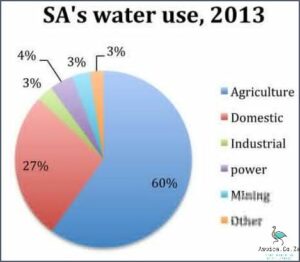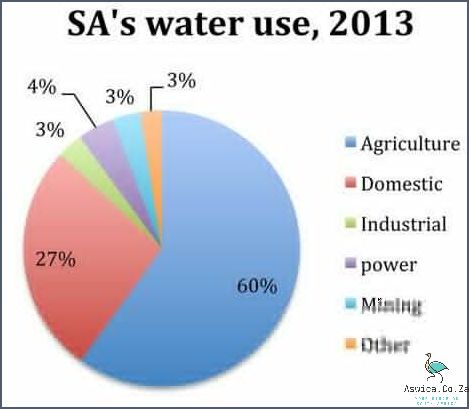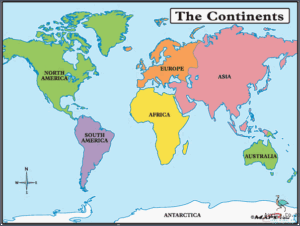
Water is one of the most precious resources in South Africa, and its availability is increasingly threatened by a number of factors. These factors range from population growth, climate change, water abstraction and pollution, to land-use changes and poor governance. As a result, South Africa is facing a water crisis of unprecedented proportions, with water shortages, water degradation, and water-related diseases becoming increasingly common. This article will discuss the various factors that are threatening water usage in South Africa, and what can be done to address them.
Population growth is one of the main factors threatening water usage in South Africa. The country’s population has grown rapidly over the past few decades, and this has had a direct impact on the demand for water. The demand for water is further exacerbated by the fact that many parts of the country are arid and semi-arid, meaning that there is less water available for use.
Climate change is another major factor affecting water usage in South Africa. The country is prone to extreme weather events, like droughts and floods, which can have a huge impact on water availability. Warmer temperatures, as a result of climate change, also cause more water to evaporate, reducing the amount of water available
Contents
Which Factors Threaten Water Usage In South Africa
South Africa is facing a severe water crisis due to a variety of factors. Poor management and distribution of water resources, population pressure, economic growth, and pollution have all contributed to the country’s water crisis. Climate change is also a major issue, with increased temperatures leading to increased water stress in parts of the country. In addition, water-intensive farming practices, the overuse of rivers and ground water, and the destruction of wetlands are all factors that threaten water usage in South Africa. In addition, the wastewater treatment infrastructure is inadequate, leading to the contamination of underground water sources. These factors all contribute to the water crisis in South Africa, and they must be addressed if the country is to have an adequate and sustainable water supply.
Causes of South Africa’s Water Crisis:
South Africa is facing a water crisis. There are a number of factors contributing to this crisis, ranging from climate change to inadequate infrastructure. Understanding the causes of the water crisis is essential to finding a lasting solution.
Climate change is a major factor in South Africa’s water crisis. The country has seen an increase in both temperature and the number of extreme weather events, such as droughts and floods. This has caused a decrease in the amount of available water, leading to water shortages in many areas.
Inadequate infrastructure is another factor that has contributed to the water crisis. Poorly maintained pipelines and dams have caused water losses, and a lack of access to safe drinking water in many rural areas. Poor infrastructure has also led to the contamination of water sources, resulting in water-borne diseases.
Water pollution is another major contributor to the water crisis. Industrial and agricultural runoff has led to the contamination of rivers and groundwater sources. This has caused a decrease in the quality of water available for drinking and agricultural use.
Population growth is also playing a role in South Africa’s water crisis. As the population increases, so does the demand for water. This has led to a decrease in the amount of available water, making it more difficult to meet the needs of the growing population.
Finally, inefficient water usage has contributed to the water crisis. Poor agricultural practices, such as over-irrigation and poor water management, have led to a decrease in the amount of usable water. In addition, many households waste water by not using water-saving devices or not practicing water conservation.
All of these factors have contributed to South Africa’s water crisis. In order to find a lasting solution, it is essential to address all of the causes of the crisis. This includes investing in infrastructure, promoting water conservation, and improving water management and agricultural practices.
Impact of South Africa’s Water Crisis:

South Africa is facing a water crisis of epic proportions. The country is not only facing the effects of climate change, but also the effects of overpopulation, pollution, and depletion of water resources. As a result, South Africa has seen a decrease in water availability and an increase in water pollution.
The first factor that is threatening water usage in South Africa is climate change. South Africa has seen an increase in temperatures in recent years, leading to increased evaporation and decreased precipitation. This, in turn, has led to lower water levels in rivers and dams, which has caused water shortages in many parts of the country. In addition, the frequency and intensity of droughts have also been increasing, leading to further water shortages.
The second factor that is threatening water usage in South Africa is pollution. Factories and other industries have been releasing chemicals and other pollutants into rivers and other water sources, leading to contamination of water sources. This has led to a decrease in the quality of the water, making it unsafe to drink or use for other purposes. In addition, agricultural runoff has also caused a decrease in water quality.
The third factor that is threatening water usage in South Africa is overpopulation. The population of South Africa is growing rapidly, leading to increased demand for water and water resources. This has caused water sources to be overused and depleted, leading to a decrease in water availability.
Finally, the fourth factor that is threatening water usage in South Africa is the depletion of water resources. Many of South Africa’s rivers and dams have been overused to the point where they can no longer sustain the population’s needs. This has caused a decrease in the availability of water and an increase in water scarcity.
In conclusion, South Africa is facing a water crisis due to climate change, pollution, overpopulation, and depletion of water resources. These factors are creating a decrease in water availability, an increase in water pollution, and an increase in water scarcity. It is important for South Africa to take steps to address these issues in order to ensure that its population can access the water they need.
Possible Solutions to South Africa’s Water Crisis:
South Africa has been facing a water crisis for years now and the situation has become increasingly worse over the past few years. The country is facing a number of factors that threaten the future of its water usage and the availability of safe, clean drinking water. From climate change to population growth, the water crisis has become a major issue that could potentially threaten the health and well-being of the country’s citizens. In order to address this critical problem, it is important to identify the factors that threaten water usage in South Africa and find possible solutions.
One of the main factors that threaten water usage in South Africa is climate change. As temperatures rise, the amount of rainfall decreases, leading to a decrease in the availability of water resources. This is compounded by the fact that, due to climate change, the country is experiencing more frequent and intense droughts. In addition, the high levels of evaporation are leading to a decrease in the amount of water available for human use.
Another factor that contributes to the water crisis in South Africa is population growth. As the population increases, so does the demand for water, leading to an increase in water use. This is further exacerbated by the fact that much of the country’s water resources are already over-exploited and unable to meet the growing demands. This can lead to water shortages and a decrease in the quality of the water available.
In order to address the water crisis in South Africa, it is important to develop sustainable solutions that can reduce the threats to water usage. One of the most effective solutions is to increase the efficiency of water usage. This can be done through measures such as water conservation, reusing water, and improving the efficiency of water delivery systems. In addition, it is important to invest in better infrastructure and technologies that can reduce water loss and improve the quality of available water.
Another possible solution is to invest in projects that can increase the amount of water available to South Africans. This can include investing in rainwater harvesting, desalination, and water storage systems. These projects can help to ensure that the country has sufficient supplies of safe, clean drinking water.
Finally, it is important to invest in education and awareness initiatives that can help to reduce the amount of water wasted and ensure that citizens are more aware of the importance of conserving water. This can include initiatives such as campaigns to promote water conservation and the use of alternative sources of water, such as recycled and harvested water.
Through a combination of efficient water usage, increased water resources, and increased education and awareness, South Africa can address the water crisis and ensure that its citizens have access to safe, clean drinking water. It is important for the country to take action now in order to protect its citizens and prevent further damage to its water resources.
Conclusion
The factors which threaten water usage in South Africa include rapid urbanization, the increasing demand for water for agricultural production, the scarcity of water resources, and the degradation of water resources. The rapid urbanization of South Africa is leading to an increase in the demand for water for agricultural production, which in turn is threatening the availability of water resources. The scarcity of water resources is also contributing to the threat of water usage, as municipalities are facing difficulty in securing sufficient water supplies. The degradation of water resources is causing water to become increasingly polluted and is leading to the contamination of ground and surface water. The increased demand for water is also contributing to the threat of water usage, as it is driving up the price of water.



